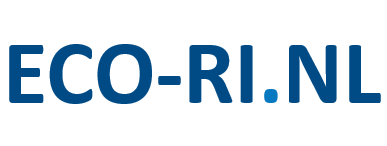Limnotrons

Details
- Infrastructure type
- Ecotron indoor
- Institute
The facility
The limnotrons are twelve stainless steel indoor mesocosms with a high level of control. The dimensions are: 0.97 m in diameter, 1.32 m (side) and 1.37 m (centre) depth, and a maximum volume of 922 L. In addition to the possibility of sampling vertically with specifically designed integrated water samplers, sampling can also be done by using the sampling ports positioned at three depths. The vessels are equipped with automatic sensors (oxygen, temperature, light), which can make pre-programmed depth profiles.
The limnotrons can be filled with tap water adjusted in chemical composition to own wishes, but they can also be filled with natural water, since the building has a fire-hose inlet which leads directly to the limnotron room. The facility also includes a custom build mixing system for equally distribution of the lake amongst the vessels and mixed between all limnotrons to homogenize the experimental conditions. The following video (spring 2025) shows what the set-up process of an experiment can look like:
Originally designed to study pelagic communities, the limnotrons have been adapted to allow for including a sediment as well. Each limnotron can have a sediment layer of 10–15 cm, so they can support macrophytes and benthic communities. The limnotrons have a thermostatically regulated microprocessor-controlled temperature regulation system, which enables thermal stratification and allows for running complicated temperature scenarios, including episodic events. Wall growth is prevented by silicon scrapers that move vertically along the limnotron walls.
Research topics
Climate change, eutrophication, trophic interactions, plankton ecology, cyanobacterial blooms, emerging pollutants, microplastics, restoration ecology.
References
- Frenken, T., Brussaard, C. P., Velthuis, M., Aben, R., Kazanjian, G., Hilt, S., Kosten,S., Peeters, E.T.H.M., de Senerpont Domis, L. N., Stephan, S., van Donk, E. & Van de Waal, D. B. (2020). Warming advances virus population dynamics in a temperate freshwater plankton community. Limnology and Oceanography Letters, 5(4), 295-304.
- Cabrerizo, M. J., Álvarez-Manzaneda, M. I., León-Palmero, E., Guerrero-Jiménez, G., de Senerpont Domis, L. N., Teurlincx, S., & González-Olalla, J. M. (2020). Warming and CO2 effects under oligotrophication on temperate phytoplankton communities. Water Research 173, 115579. https://doi.org/10.1016/j.watres.2020.115579
- Kazanjian, G., Velthuis, M., Aben, R., Stephan, S., Peeters, E.T.H.M., Frenken, T., Touwen, J., Xue, F., Kosten, S., Van De Waal, D.B., de Senerpont Domis, L.N., Van Donk, E., Hilt, S. (2018) Impacts of warming on top-down and bottom-up controls of periphyton production. Scientific Reports 8.
- Aben, R.C.H., Barros, N., Van Donk, E., Frenken, T., Hilt, S., Kazanjian, G., Lamers, L.P.M., Peeters, E.T.H.M., Roelofs, J.G.M., de Senerpont Domis, L.N., Stephan, S., Velthuis, M., Van De Waal, D.B., Wik, M., Thornton, B.F., Wilkinson, J., Delsontro, T., Kosten, S. (2017) Cross continental increase in methane ebullition under climate change. Nature Communications 8.
- Velthuis, M., de Senerpont Domis, L.N., Frenken, T., Stephan, S., Kazanjian, G., Aben, R., Hilt, S., Kosten, S., Van Donk, E., Van De Waal, D.B. (2017) Warming advances top-down control and reduces producer biomass in a freshwater plankton community. Ecosphere 8. https://doi.org/10.1002/ecs2.1651
- Verschoor, A. M., Takken, J., Massieux, B., & Vijverberg, J. (2003). The Limnotrons: a facility for experimental community and food web research. Hydrobiologia 491 (1–3), 357–377. https://doi.org/10.1023/A:1024444702289
Running period (guaranteed funding)
2017 – 2021: EU-RI Project AQUACOSM
2020 - 2024: EU-RI Project AQUACOSM-plus
2025 - 2030: SEFAP
Equipment / facilities
Equipment and facilities available for analysing mesocosm data are described in the factsheets on Aquatic Laboratories and on the Flowcytometry and Cell Sorting Lab.
Data management
Data collected under Transnational Access funding as provided by AQUACOSM and AQUACOM-Plus have to comply with the Data Management Plan that can be found at https://www.aquacosm.eu/transnational-access/aquacosm/. Data collected outside Transnational Access funding are managed according to the NIOO Research data policy, which is in compliance with FAIR data guidelines.
Available datasets
Collected data are managed according to the NIOO Research data policy, which follows FAIR data guidelines. Datasets should be made available via a data repository (arising from publications) or upon request (not covered in publications). Datasets generated under AQUACOSM’s Transnational Access funding can be found at the AQUACOSM metadataportal (https://www.aquacosm.eu/geonetwork/srv/eng/catalog.search#, where the doi of the dataset is provided as well. All data collected under Transnational Access are open for access to third partners.
Conditions for access
Access to the limnotrons may be facilitated through transnational access funding available through AQUACOSM and AQUACOSM-plus. Details on the requirements for Transnational Access can be found at https://www.aquacosm.eu/mesocosm/limnotrons/
Details
- Infrastructure type
- Ecotron indoor
- Institute

